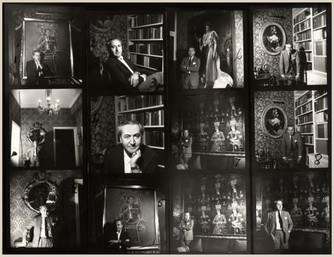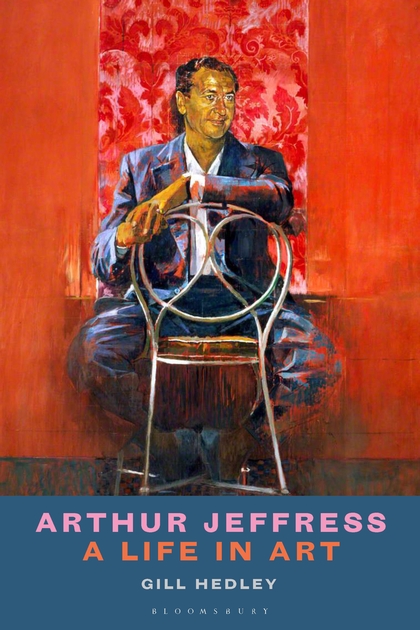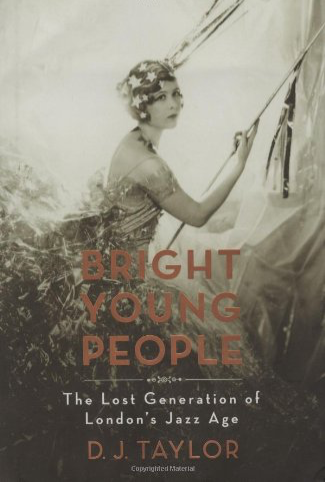Arthur Jeffress - Muses & The Beau Monde
- Lilium

- Apr 15, 2020
- 4 min read
Updated: Sep 13, 2020

Arthur Tilden Jeffress, born 21 November 1905 in Brentford, Middlesex, was an influential gallery owner, collector and patron of the arts in post-Second World War Britain.
The Jeffress family lived at Kenton Grange, a 27-acre estate at Kenton, Middlesex. Arthur was educated at Harrow and Pembroke College, Cambridge.
Jeffress and his brother Randolph were both interested in cars; Randolph, who owned a Bugatti and 1929 Supercharged Alfa Romeo, became an amateur racer. Jeffress's own interest was mainly in automotive aesthetics, leading to his ownership of first a Kissel, then, aged 28, his first Rolls-Royce, a two-seater 20/25 convertible (GGA29).
After leaving Cambridge Jeffress's enthusiasm for the arts led him to enter artistic social circles; he was an acquaintance of the Sitwells, playing a role in Osbert and Sacheverell's play "First Class Passengers Only" at the Arts Theatre in 1927. The Sitwells' artistic salon at their Carlyle Square home regularly hosted eminent writers, artists, critics and patrons; giving Jeffress his first contact into this world.

Jeffress's friend, André Ostier, was at this time running a gallery in Paris; another friend, Henry Clifford, would become head curator of the Philadelphia Museum of Art. With the guidance of these artistically-knowledgeable friends, Jeffress began collecting art by the mid-1930s. At around this time, he bought de Chirico's "The Painter's Family", a Picasso, and a number of other works.
Jeffress was part of the The Bright Young people, a group that was famous for its dedication to the arts, literature and throwing extravagant parties; on 21 November 1931, Jeffress hosted the last great so-called "Monster Balls", the "Red and White Party".
This was held at the west wing of Holford House in Regent's Park. This was the home of the famous dancer Maud Allan. Although 250 people were invited, four hundred attended. The party's name was reflected in the request that guests dress only in red and white costumes- these included sailor suits, nun's habits, evening dress, sashes, wigs and gloves. The rooms were extravagantly decorated in red velvet and white silk, and the food and drink consisted of red caviar, lobster, salmon, champagne, wine, and gin. Even the cigarettes were red and white.
Jeffress greeted his guests attired in a white angel-skin sailor suit with red trimmings, a ruby necklace, two diamond clips and a spray of white star orchids. Evan Morgan (Tredegar House) was in a scarlet toga, his young gentleman friend was in a white ski-suit, with a white fur shako.

During much of the 1930s, Jeffress's boyfriend was John Deakin, an "acid-tongued... wit", later a photographer of Soho in the 1950s who also influenced Arthur's art collecting.

With the onset of war in Europe, Jeffress became a non-combatant ambulance driver. His childhood enthusiasm for motor vehicles had led him to become a skilled driver and knowledgeable about vehicle maintenance. Jeffress put his art collection into storage and closed up his house, offering its use to the military.
After the war, Jeffress returned to Britain with a revitalized passion for art. In 1947, he and Erica Brausen opened the Hanover Gallery near Hanover Square, London. Brausen had experience with the gallery business, previously worked at the Redfern and other galleries. While she ran the business, Jeffress provided financial backing and gave customers the benefit of his social connections with others in the art world; the two collaborated on the gallery's artistic focus.
One of the gallery's earliest artists was Francis Bacon, who held his first solo exhibition there in 1949. Other artists included Graham Sutherland and Lucian Freud. It was considered “one of the most diverse and interesting galleries in Europe.”

In 1954, Jeffress opened his own gallery, "Arthur Jeffress (Pictures)", at 28 Davies Street, London. Jeffress had brought Robert Melville with him from the Hanover Gallery to run this new operation. An influential art critic and journalist, Melville's reputation, combined with that of Jeffress, helped to quickly establish the new gallery in the London art world. Unlike the Hanover Gallery, Arthur Jeffress (Pictures) did not represent individual artists; Jeffress would purchase paintings he and Melville liked from artists, other galleries and auctions, curating them into shows and selling them.
Jeffress was an expert marketer of his business, using his extensive social network and personal charm to promote it. He was considered one of the most colourful figures- and his gallery one of the most colourful institutions- in the London art world at this time.

By the late 1950s Jeffress had collected hundreds of pieces of art, although did not consider himself a dedicated expert collector, recognising his idiosyncratic approach. This collection was constantly changing; at various times it included works by works by Caruso, Chagall, Delacroix, Delvaux, Lucian Freud, Modigliani, Matisse, Picasso, Pollock, Rouault, Rousseau, Simbari, Soutine, Sutherland, Weenix, and many others.
Jeffress committed suicide on 21 September 1961 while staying at the Hotel France et Choiseul in Paris. The reasons for his death remain unknown, though there are many speculations. Jeffress's friend Robert Melville, who knew him well, stated that “Arthur... came finally to the point of wondering whether the world wanted him or not."
Jeffress left his art and money to communities he cared about:
The Tate received two works: the portrait of Emile Bernard by Toulouse Lautrec and André Bauchant’s Funeral Procession of Alexander the Great.
The Southampton City Art Gallery received 99 works includes works by Lucian Freud, Graham Sutherland, Walter Sickert, David Roberts, Paul Delvaux and many others.
A substantial sum of money was left to the welfare of "male naval ratings and merchant seamen".
Reading Recommendations & Content Considerations
A Life in Art (Page 245)
By Gill Hedley By D. J. Taylor



























Comments